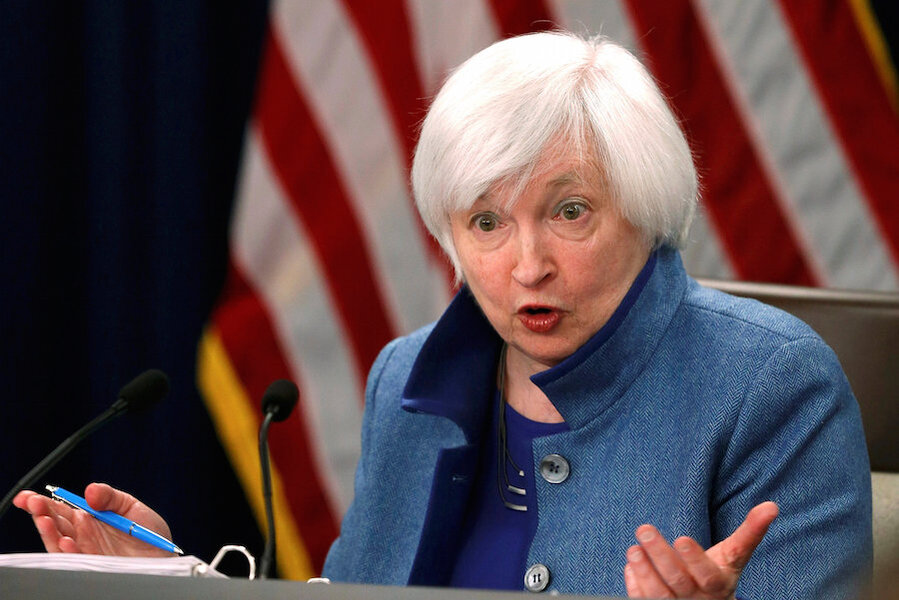Fed rate hike: What does it mean for mortgage rates?
Loading...
The Federal Reserve hiked short-term interest rates by 0.25 percentage point Wednesday, in line with nearly universal expectations. It’s the first time the central bank has raised rates in almost a year.
If you’re a current or would-be homeowner, you shouldn’t feel rushed into action. In fact, the biggest moves in mortgage rates have likely already happened — and the Fed had nothing to do with them.
But the Fed’s action, and the expectation that it will raise rates again in the coming months, has important implications for mortgage rates, as well as your ability to buy a home or refinance your loan.
What happened after the last Fed rate hike
Rates on 30-year fixed-rate mortgages averaged 3.97% prior to the last Fed rate hike on Dec. 16, 2015, according to Freddie Mac. Many experts predicted they’d move higher, but after briefly touching 4% just before the end of last year, rates retraced their steps through 2016, falling below 3.5% in July through October.
And then came the presidential election. Every mortgage rate forecast flew out the window when rates soared above 4%; they’ve remained there ever since.
The Fed can’t trump Trump
Nothing moves mortgage rates like a surprise presidential-election outcome — not even the Fed. Brad Hunter, chief economist for HomeAdvisor, a home improvement referral site, expects two or three additional Fed rate hikes in 2017, but that mortgage rates will only gradually move higher throughout the year.
However, Hunter says there are three things that could lead to a faster-than-expected increase in interest rates, and they all involve the presidency of Donald Trump.
1. Trump might appoint a new Fed chair. As president, Trump will be able to appoint two governors to the Federal Reserve Board right away and replace Chair Janet Yellen when her term ends in early 2018.
During the campaign, he said that the Fed has been holding interest rates at abnormally low levels. And if he builds a Fed that takes a more aggressive and activist approach to monetary policy, that would increase the likelihood of higher interest rates.
“On the other hand, Mr. Trump has also said that he ‘likes’ low interest rates, so his ultimate course of action on this matter is unclear,” Hunter says.
2. Trump might cut taxes. That could result in higher budget deficits, especially combined with his infrastructure spending plans.
“A higher budget deficit would force more bond issuance, which would tend to push bond prices down and interest rates higher. Also, if the fiscal stimulus causes the economy to accelerate, that could mean additional upward pressure on rates,” Hunter says. “And in this circumstance, the higher rates would be a reflection of positive news rather than negative.”
3. Trump might renegotiate the federal debt. The president-elect has floated a few ideas, including buying existing U.S. Treasuries at a discount. That debt would have to be retired — or replaced with lower-interest new bonds — in effect refinancing the debt. He also mentioned “renegotiating” federal debt, a move just short of defaulting on what have been the world’s most secure bonds.
Trump has since backed down from these proposals. But “If such an unprecedented event were to happen, investors worldwide would suddenly start to view our debt as risky, demanding to be paid a higher rate of interest,” Hunter says. “That would in turn further add to the deficit. Long-term rates, including mortgage rates, would go up.”
The 2017 housing and mortgage rate forecast
Barring such events, forecasters predict a trade-off: Rising mortgage rates will be accompanied by an improving economy and the potential for higher wages.
In its latest outlook, Freddie Mac said it expects to see “some additional interest rate increases following the recent movements.” The company, which provides capital to the mortgage market by buying mortgage loans from lenders, predicts 30-year mortgage rates will average 4.2% at the end of 2017.
Mike Fratantoni, chief economist for the Mortgage Bankers Association, also expects a steady climb. “What happened in the past month, we were looking to occur over the next year,” he says. “I think we’ve seen the big move already.”
Both the association and Freddie Mac are forecasting fewer homeowners will go through the mortgage refinance process.
“We’ve already seen some pretty clear signs that we’re on our way to that trajectory,” Fratantoni says. “In the last month, we’ve seen mortgage rates go up about half a percentage point, [and] we’ve seen refi application volume drop 28%.”
On the other hand, the association projects $1.10 trillion in purchase mortgage originations — homebuyers taking out new mortgages — during 2017. That’s an 11% increase from 2016.
The 2017 forecast from TransUnion, the credit analytics company, agrees that lower unemployment rates and a growing median household income will allow more first-time homebuyers to enter the market next year.
“We believe with improved economic conditions we could see nearly 3 million first-time homebuyers in 2017,” Joe Mellman, vice president and mortgage line of business leader at TransUnion, said in the forecast.
And in the coming year, would-be buyers and mortgage refinancers should still have the benefit of historically low interest rates — perhaps combined with improving personal finances.
Hal Bundrick is a staff writer at NerdWallet, a personal finance website. Email: hal@nerdwallet.com. Twitter: @halmbundrick.
This article first appeared in NerdWallet.







